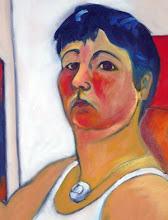
The history of banana eating goes back at least as far as Roman times, and it is supposed to have originated in East Asia or Oceania. The botanical name is Musa acuminata where Antonius ‘Musa’ is the physician of Octavius Augustus and ‘acuminata’ means tapered. The word ‘banana’ is Arabic for ‘finger’. The ancient banana is not the banana we eat today but really a plantain, a fruit that needed to be cooked to be enjoyed. Our banana, the sweet banana, is actually a mutation discovered by Jean Francois Poujot on his Jamaican banana plantation. All sweet bananas would be grown from that original sport, as bananas are cultivated by cutting and not by seed (though not in direct line as there have been a few banana variety wipeouts). They would have been eaten with a knife and fork back then. They were all the rage at the 1876 Philadelphia Centennial Exposition and sold for a whopping ten cents each.
Now, on the other hand, they are one of the cheapest foods in the US and the UK and are also one of the most popular foods. From that original little mutation an enormous industry has been born, as well as wars been fought. The United Fruit Company started life as the Boston Fruit Company by Massachusetts sea captain Lorenzo Dow Baker, railroad builder Minor Keith of New York, and then Boston businessman Andrew Preston. A subsequent merger in 1899 created the United Fruit Company that dominated the banana trade until it literally controlled the governments of countries like Guatemala and Costa Rica, hence the term ‘Banana Republic’.
It didn’t just happen overnight because when the banana first arrived in North America it was an oddity to say the least. It was necessary to educate the public and many recipe instructions were given. Much of the success of the fruit lay in it being available, much like the orange, in the winter months, but that’s not the whole story. They come in their own handy packaging but even more appealing they are full of dopamine and serotonin and so give the brain a ‘feel-good’ sensation. All of this goodness packed into just 69 cents a pound or less? And shipped from across the world? How can this be? It comes at the expense of the workers in the countries where bananas are grown, workers who are low paid, exposed to highly dangerous levels of toxic chemicals, and live in squalid conditions, and as I said wars fought and paid for by United Fruit. In 2007 Chiquita Banana brand paid out a $25 million settlement after pleading guilty to funding terrorist activities in Columbia before it sold its interests there in 2004.

Whenever possible I have chosen not to supplement unfair practices against workers, or terrorism, or unsustainable farming, and I look out for the Fair Trade sticker on my bananas. Just by paying ten to twenty cents more for this already cheap fruit I can help to make a difference.
Sources and more information:
We're All Going Bananas - The Observer
Bananabook.org
Banana History at About.com
Fair Trade Bananas at Coop America
Chiquita and Columbia Terrorism at MSNBC




2 comments:
Good info. And bananas are a baby favorite. Their price makes them a good choice for mothers with little money. Unfortunately, they probably would not opt for the free trade bananas.
That leads me to wonder why the WIC program does not cover fresh fruits and vegetables.
Yes, well it's all about subsidies and special interest groups who gets what!
Mothers would benefit the most from fair trade and organic bananas as tots are the most at risk from pesticide toxins.
Post a Comment